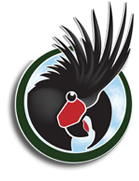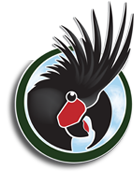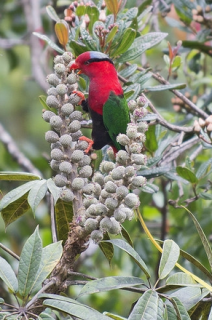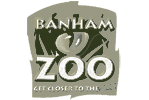Papuan Lorikeet |
|
|
Also known as: Papuan Lory
Species Profile
Genus: Charmosyna | Species: papou
Size:
25cm (9.75 in)
Weight:
90-115g (3.1-4 oz)
Subspecies including nominate:
one
Colour Adult:
Both adults in general red; dark green mantle and wings; pale blue streaked in front of black patch on rump; thin black band across hindneck; blue patch on rump and upper tail coverts; lower flanks and sides of breast have yellow patches; black thighs and abdominal band with purple shine; red underwing coverts; green tail tipped with yellow. Bill orange/red. Eye yellow/orange.
Colour Juvenile:
In general duller than adults; with black margins on feathers of neck and breast; duller blue patch on rump less extensive; yellow underwing band in varying proportions; central tail feathers considerably shorter. Bill brown/orange tipper with black. Eye dark brown.
Call:
Are described as distinctive; in flight are loud and slurred in upward inflection; also quieter, mellower screech. When feeding or at rest emits a nasal, long note increasing in volume.
Listen NowVideo Links:
Video 1More Information:
Content Sources:
CITES
BirdLife International
Cornell Lab of Ornithology/Birds of the World
Parrots: A Guide to Parrots of the World, Juniper and Parr, 1998
ML Media Collection Catalogue 65897, Papuan Lorikeet Charmosyna papou, Connop, Scott, Papua New Guinea, Oct. 6 1993, Cornell Lab of Ornithology. Site
Parrots of the World, Forshaw, 2006. 2010 edition
Lexicon of Parrots, Thomas Arndt.
Parrots in Aviculture, Low, 1992.
Species Care
Captive Status:
Uncommon
Longevity:
15+ yrs
Housing:
Aviary with concrete, sloping floor towards drain, or suspended enclosure over concrete base.
Diet:
Nectar, either a commercial type or homemade from baby cereal (lactose-free), honey and malt extract or molasses, mixed with filtered water and made fresh daily; fruit (once or twice daily) such as: apple, pear, banana, orange, cactus fruits; vegetables such as: carrot, fresh corn on the cob or unsalted tinned sweet corn, green leaves such as Swiss chard, lettuce or dandelion; rearing food made from hard-boiled egg, wholegrain bread and carrot, all ground to a crumbly consistency.
Enrichment:
Avid bathers, provide water bowls or spray misters once a day; socialization; large enclosure for daily flights. Also provide swings, ladders and other toys, all easy to clean, to appeal to the acrobatic nature of this species.
Nest Box Size:
Vertical box 6" x 6" x 12" (15.2cm x 15.2cm x 30.5cm).
Clutch Size:
2
Incubation Time:
26 days or more
Fledging Age:
60 days
Hatch Weight:
4g (0.14 oz)
Peak Weight:
Not recorded.
Weaning Weight:
Not recorded.
Specialist Club:
Species Wild Status
World Population:
Unknown, stable.
IUCN Red List Status:
Least Concern
CITES Listing:
Appendix II
Threat Summary:
Hunting for feathers which are sought after for tribal head-dresses and capture for the wild bird trade are not thought, at this time, to be factors affecting population size.
Range:
Vogelkop Mountains, W Irian Jaya.
Habitat:
Found up to 3500m (11,480 ft) in Nothofagus-Podocarpus forest.
Wild Diet:
Feeds on nectar, pollen, flowers, flower buds, fruits of Schefflera and small seeds.
Ecology and Behaviour:
Usually seen in pairs or groups. Very active and agile. Moves through trees with jerky movements flicking their long tails.
Clutch and Egg Size:
2 eggs, 24.5 x 22.5mm (0.9 x 0.8 in)
Breeding Season:
Possibly August, with young birds seen in October and November.
Related Links:
Members Only Resources
Please log-in now to find more research, resources and tools.
Not a Member?
Find more great information:
Gain exclusive access to 600+ pages of additional research, seminars and podcasts, specialists to ask your toughest questions, and dozens of other fun resources - when you become a WPT member.
Join Today >>

































